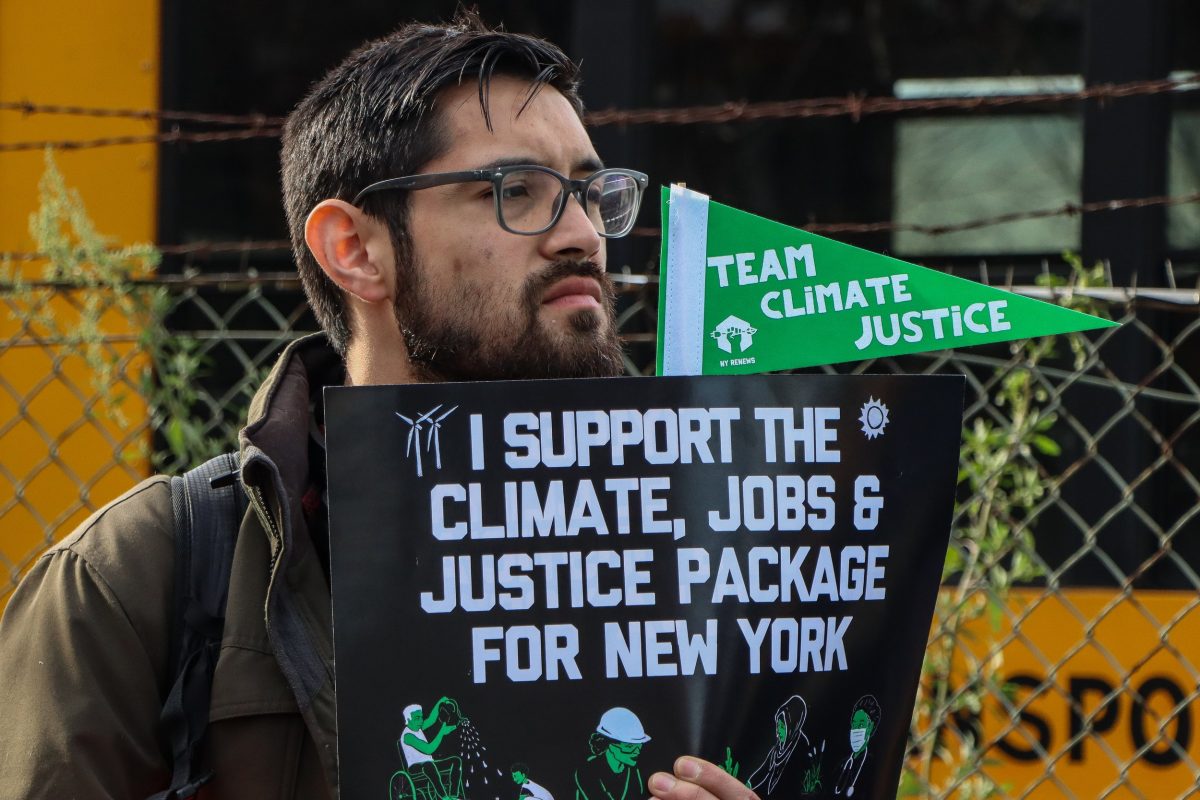A Long Island resident protests peacefully in hopes of putting the Climate, Jobs & Justice package into effect. // Annie MacKeigan / The Hofstra Chronicle
On Wednesday, April 17, Hofstra geared up for Earth Day by hosting a panel about the portrayal of violent and non-violent climate activism in the media. The panelists included Professor Paul Fritz from the department of political science, Professor Scott Brinton from the department of journalism, mass media and public relations, and Professor Phillip Dalton from the department of rhetoric. Dalton also serves as the director of the Center for Civic Engagement. Each of the three panelists brought unique perspectives from their areas of expertise and tied their ideas back to the mainstream media coverage of environmental activism.
“What we’re doing in journalism today isn’t really what the world needs,” Brinton said. “One of the most important ways [to promote climate stories] is at the local level.”
The panelists spoke about the influential role the media plays in climate activism. Brinton himself has written 44 articles, accounting for over 60,000 words, about diesel exhaust pollution at Freeport Power Plant No. 2; his work contributed to the eventual shutdown and replacement of the plant.
Hannah Ardiff, a senior labor studies and political science double major who organized the event, was inspired by Hofstra’s LEAF Club to put together the panel. Ardiff attended a climate-related protest in Manhattan in the fall of 2023.
“I started thinking about, well, what kind of protests are effective? Are these non-violent protests effective?” Ardiff said. Her questions were one of the motivations she had to create Wednesday afternoon’s event.
“Peaceful, non-violent protesting movements have achieved much more when it comes to environmental advocacy than violent movements,” Fritz said. He continued by stating that no casualties have ever been recorded in association to violent climate-related protests in the United States.
“I learned a lot about the media framing and its effectiveness and how the local media is so important,” Ardiff said following the event.
Brinton suggested that much of the framing in the media coverage of climate events began during a time of “media mixed-messaging.”
“There’s this thing we call ‘objectivity’ in journalism, where we have to get both sides,” Brinton said. He explained that a transition from pure environmental journalism to media mixed-messaging occurred during the emergence of pro-business environmental agencies.
“That’s where confusion starts to come in,” Brinton said. “What we’ve seen is this idea that we have to get both sides, even though we know one side is wrong.”
“I learned a lot about the media’s involvement,” said Lauryn Priester, a sophomore film studies and production major. Priester’s interest in activism was what drew her to the event. She is also working on an environmental justice paper, so she found the event to be informative for her writing.
Each of the three panelists emphasized the importance of the local angle for environmental news coverage. Long Island is no stranger to climate issues. The maintenance of clean drinking water, the threat of rising sea levels and the pollution caused by a majorly car-dependent road system are just a few issues residents are concerned with. Groups like NY Renews and the Long Island Progressive Coalition have coalesced in hopes of mitigating potential climate crises on Long Island.









